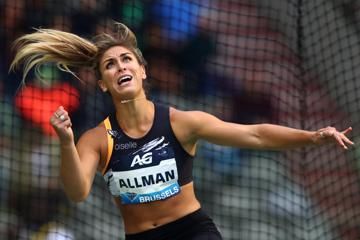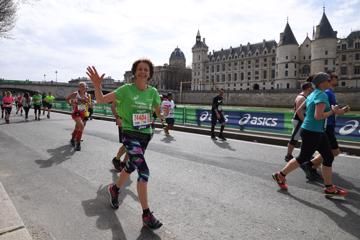Swedish long jumper Khaddi Sagnia (© Getty Images)
Khaddi Sagnia is among the world’s finest long jumpers, soaring out to a personal best of 6.92m in 2020. Yet the charismatic 26-year-old Swede has also suffered her fair share of injuries, including ACL tears that required surgery in 2013 and 2019.
In this interview with Be Active, Sagnia reflects on what she learned from those experiences to offer these tips on healing well - advice that can also help recreational athletes hit by injury.
Emotionally reset
Following the initial blow of sustaining an injury, Sagnia says it is important to quickly re-evaluate why you pursue the sport.
“Sometimes athletics is not always fun and you experience difficult moments but what really helped me was reminding myself why I loved the sport. This acts as a motivation in the healing process. Even when facing a setback you can learn and grow.”
Be patient and honest
Throughout the injury rehabilitation process, Sagnia says it is critical to be patient and do whatever to takes to return at 100 per cent.
“Take your time and try not let things distress you,” she explains. “It is important to do the rehab at your own pace and not rush back to competition too soon. You are only fooling yourself if you return back too quickly to competition. You will quickly be exposed.”
Work on your weaknesses
As an older, wiser athlete, Sagnia says there are opportunities which should be seized upon even when sidelined from regular training during injury.
“You suddenly find you have so much more time than when you are training regularly,” she explains. “But this gives you the chance to work on perhaps other small issues which have caused the injuries like strengthening the core.”
Set little goals
When recovering from a long-term injury, Sagnia insists it is important not to think too far ahead and instead focus on shorter-term targets to aid motivation.
“It may be something as simple as setting a goal of walking without the aid of crutches in ten days,” she says. “You need to reset your brain that way. Similarly other targets might include the first time you can run again or the first time you can jump.”
Have someone to lean on
Sagnia says a strong support crew of people is also vital in overcoming any injury. Over the years her coach, physio and medical team have all played an important role in the rehabilitation. However, somebody to offer emotional support is also critical – and Sagnia has been very fortunate in having older brother, Gibril, (Sagnia is one of eight siblings) to fill this void.
“At different times my brother has played the role as both a father and a mother, when they have not been around,” explains Sagnia. “Gibril is always the one calling me and checking up on me. If I need his help, he will drop everything and come and see me. He has always been at my side.
“If I need to offload something he is always such a good listener and amazing problem solver. When I have become tired in the recovery process from past injuries he has always remained calm and explained to me that this is not meant to be my time. Just be patient, continue the rehab and everything will be fine.”
Remain positive
For Sagnia, retaining a positive mindset is another important tool in the return from a lengthy injury.
“You can always pick the positives out in life, so try and do so each and every day,” she adds. “Try and take yourself out of the bad to see the good. Surround yourself with positive people and try to do positive things to make you happy.”
Find other distractions
Overcoming injury can be particularly challenging for athletes with very little else in their lives other than athletics. So the Swedish international emphasises the importance of undertaking other pursuits and interests.
“It is a good to be able to shift focus to something else like studying or maybe a job,” she says. “I personally love reading and travelling, so for me I used the extra time I had recovering from an injury by reading more books, spending more time with family and friends and seeing more places around Sweden. It can be tough mentally for athletes who are only focused on athletics during the rehab process.”
Steve Landells for World Athletics















